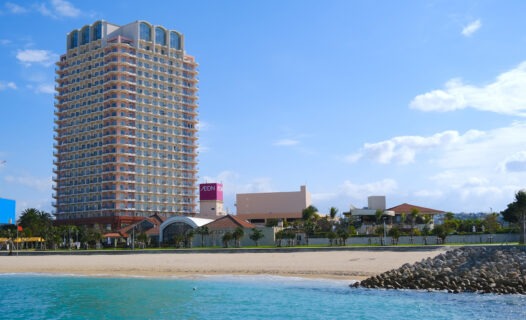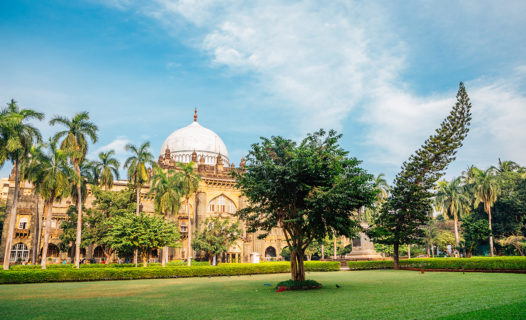An Invitation to Tranquility at Tirta Empul Temple
Welcome to the enchanting world of Tirta Empul Temple, a sacred oasis nestled in the heart of Bali. This isn’t just any temple; it’s a spiritual sanctuary where the ancient meets the divine. Known as the Bali purification temple, Tirta Empul invites you to experience a profound sense of peace and rejuvenation. Picture yourself surrounded by lush greenery, the gentle sound of flowing water, and the soft whispers of prayers echoing through the air. It’s a place where you can cleanse not just your body, but your spirit as well.
The temple is famous for its holy spring water, believed to possess magical cleansing properties that purify the mind and soul. As you wander through its serene grounds, you’ll find yourself drawn into a world of tranquility, where the hustle and bustle of everyday life feels like a distant memory. Whether you’re seeking a spiritual experience in Bali or simply a moment of reflection, Tirta Empul Temple is the perfect destination to reconnect with yourself.
So, are you ready to discover the sacred waters and immerse yourself in the rituals that have been practiced for centuries? Join us as we explore the magic of Tirta Empul Temple and uncover the secrets of its spiritual significance.
Discovering the Sacred Waters: A Guide to Tirta Empul
Located just a short drive from Ubud, Tirta Empul Temple is a must-visit for anyone exploring Bali. Established in the 10th century, this Bali temple is steeped in history and folklore. Legend has it that the temple was built around a sacred spring that emerged after the god Indra struck the ground with his staff, creating a source of pure, holy water. This spring is the heart of the temple, where visitors and locals alike come to partake in the holy spring water rituals that have been passed down through generations.
As you stroll through the temple grounds, you’ll encounter beautifully crafted stone carvings and intricate architecture that reflect the rich cultural heritage of Bali. The temple is divided into three main sections, each with its own unique significance. The first area is dedicated to the gods, the second to the purification process, and the third serves as a space for meditation and reflection. This harmonious layout embodies the Balinese philosophy of balance and spirituality, making it a perfect spot for a Bali temple visit.
While you’re there, don’t forget to take a moment to soak in the atmosphere. The sound of water trickling from the fountains, the scent of incense wafting through the air, and the sight of devotees offering flowers and prayers create a truly enchanting experience. It’s a place where you can feel the energy of the past mingling with the present, inviting you to be a part of something greater.
Curious to learn more about this spiritual haven? Check out our guide to Explore the Spiritual Serenity of Tirta Empul Temple, where we delve deeper into its history and significance.
Balinese Temple Rituals: Participating in the Purification Ceremony
One of the most captivating aspects of Tirta Empul Temple is the purification ceremony that takes place in its sacred waters. This ritual is not just a tourist attraction; it’s a deeply spiritual experience that locals and visitors alike hold dear. As you prepare to participate, you’ll notice the atmosphere shift—there’s a palpable sense of reverence and anticipation in the air.
The ceremony involves bathing in the temple’s holy spring water, which flows from a series of spouts. Each spout is dedicated to a different deity and serves a specific purpose in the purification process. Before you step into the water, it’s customary to offer a small prayer and a flower offering at the altar. This is a moment to set your intentions and seek clarity or healing.
As you immerse yourself in the sacred waters, you’ll feel a refreshing wave wash over you, both literally and metaphorically. Many participants describe the experience as transformative, leaving them with a sense of lightness and peace. Remember to approach the ritual with respect and an open heart, as it is a sacred practice for the Balinese people.
Want to know more about how to participate respectfully? Check out our article on Experience Tirta Temple: A Spiritual Splash of Fun for insider tips and personal anecdotes from fellow travelers.
The Architecture of Serenity: Exploring Tirta Empul’s Structure
As you wander through Tirta Empul Temple, you’ll be enchanted by its stunning architecture. The temple is divided into three main sections, each representing a different aspect of Balinese spirituality. The first section is the outer courtyard, where visitors enter and are greeted by intricately carved gates and statues that depict various deities.
Moving deeper into the temple, you’ll find the second section, which houses the sacred spring and the purification pools. This area is adorned with beautiful stone carvings that tell stories from Hindu mythology, adding a layer of depth to your visit. The final section is the inner courtyard, a tranquil space dedicated to meditation and reflection, where you can take a moment to absorb the beauty around you.
The architectural style of Tirta Empul is a reflection of Bali’s rich cultural heritage, showcasing the island’s unique blend of Hindu and local traditions. From the ornate carvings to the carefully laid out gardens, every detail speaks to the island’s spiritual essence. It’s a feast for the eyes and a balm for the soul, making it a highlight of any trip to Bali.
If you’re eager to learn more about the temple’s unique architectural features, don’t miss our article on Discover Tirta Empul Temple: A Day of Fun & Rituals, where we explore the significance of each section in greater detail.
A Day Trip to Tirta Empul: Itinerary for the Perfect Visit
Planning a memorable day trip to Tirta Empul Temple? You’re in for a treat! This sacred site is not only a spiritual haven but also a beautiful destination that offers a glimpse into Bali’s rich culture. Let’s craft the perfect itinerary to help you make the most of your visit.
Morning: Arrive Early for Serenity
Start your day early to soak in the tranquility of Tirta Empul Temple. Aim to arrive by 8 AM when the temple opens. The morning light adds a magical touch to the temple, making it a photographer’s paradise. Plus, arriving early means fewer crowds, allowing you to fully appreciate the peaceful atmosphere.
Explore the Temple Grounds
Once you’ve entered the temple, take your time wandering through the three sections we previously discussed. Marvel at the intricate stone carvings and the lush gardens. Don’t forget to visit the sacred spring and purification pools, where you can observe the rituals taking place. Feel free to snap some photos, but remember to be respectful of the space and the worshippers.
Mid-Morning: Participate in the Purification Ceremony
After exploring, it’s time to immerse yourself in the purification ceremony. Before you enter the water, make a small offering at the altar and set your intentions. As you bathe in the holy spring, let the water wash away your worries and rejuvenate your spirit. Many visitors find this experience to be transformative, and who knows? You might leave with a newfound sense of clarity!
Lunch: Savory Delights Nearby
After your spiritual cleansing, it’s time to refuel! Head to one of the local eateries nearby. You can find delicious options serving traditional Balinese dishes. Try the famous Nasi Campur, a rice dish served with a variety of sides, or indulge in Sate Lilit, a unique Balinese satay made from minced meat and spices. Enjoy your meal while taking in the beautiful views of the surrounding rice paddies.
Afternoon: Visit Nearby Attractions
Post-lunch, consider visiting nearby attractions like the Gunung Kawi Temple, just a short drive away. This stunning site features ancient shrines carved into the cliffside, surrounded by lush greenery. It’s a fantastic way to continue your exploration of Bali’s spiritual heritage.
Late Afternoon: Relax and Reflect
Return to Tirta Empul for a bit more exploration or simply find a quiet spot to relax and reflect on your day. The serene environment is perfect for meditation or just enjoying the sounds of nature. Take a moment to appreciate the beauty around you and the experiences you’ve had.
Evening: Sunset Views
As the sun begins to set, find a picturesque spot near the temple to witness the breathtaking sunset. The golden hues against the backdrop of the temple create a stunning scene. It’s a beautiful way to conclude your day, leaving you with lasting memories and a sense of peace.
Curious about more experiences in Bali? Don’t miss out on our guide to Journey to Tirta Empul: Bali’s Sacred Water Temple, where we explore more about this enchanting destination.
Culinary Delights Near Tirta Empul: A Taste of Balinese Cuisine
What’s a trip to Bali without indulging in its culinary treasures? Near Tirta Empul Temple, you’ll find a variety of local eateries that offer a feast for your taste buds. Here are some must-try dishes and dining spots to enhance your cultural immersion.
Warung Babi Guling
For an authentic Balinese experience, visit Warung Babi Guling, famous for its Babi Guling (suckling pig). This dish is a local favorite, marinated with a blend of spices and slow-roasted to perfection. Pair it with rice and vegetables for a meal that’s both hearty and satisfying.
Ayam Betutu
Another dish to savor is Ayam Betutu, a spiced chicken wrapped in banana leaves and baked until tender. The flavors are rich and aromatic, making it a delightful choice for lunch or dinner. Many restaurants serve this dish, so you’ll have plenty of options to choose from.
Traditional Balinese Desserts
Don’t forget to leave room for dessert! Treat yourself to Klepon, sweet rice cake balls filled with palm sugar and coated in grated coconut. These little bites of joy are a perfect way to end your meal on a sweet note.
If you’re looking for a unique dining experience, consider joining a cooking class where you can learn to prepare these dishes yourself! It’s a fun way to immerse yourself in Balinese culture while enjoying the fruits of your labor.
For more culinary adventures, check out our article on Explore Bali’s Water Temples: Culture & Serenity Awaits.
Festivals and Events at Tirta Empul: Celebrating Balinese Culture
Visiting Tirta Empul Temple during a festival is an extraordinary experience that showcases the vibrant culture of Bali. The temple hosts several significant events throughout the year, each steeped in tradition and spirituality.
Galungan Festival
One of the most notable celebrations is the Galungan Festival, which occurs every 210 days according to the Balinese calendar. This festival commemorates the victory of dharma (good) over adharma (evil) and is marked by vibrant ceremonies filled with offerings, traditional music, and dance performances. Visitors during this time can witness the temple adorned with beautiful decorations and participate in the festivities.
Kuningan Festival
Following Galungan, the Kuningan Festival takes place, marking the end of the celebrations. This event is characterized by rituals that honor ancestors, with offerings made to the spirits. The atmosphere is filled with devotion, and witnessing the ceremonies is a profound experience for visitors.
Nyepi Day
Another unique event is Nyepi Day, the Balinese Day of Silence. Although the temple is closed to visitors, the days leading up to Nyepi are filled with vibrant parades and the famous Ogoh-Ogoh processions, where large, colorful effigies are carried through the streets to symbolize the banishment of evil spirits.
Experiencing these festivals offers a deep dive into Balinese culture, making your visit to Tirta Empul Temple even more memorable. For more insights on cultural events, check out our article on Experience Tirta Empul Temple During Galungan Festival.
Practical Travel Tips for Visiting Tirta Empul Temple
Before you head off to Tirta Empul Temple, here are some essential travel tips to ensure a smooth and respectful visit.
Opening Hours and Entrance Fees
Tirta Empul Temple is open daily from 8 AM to 6 PM. The entrance fee is quite affordable, typically around 50,000 IDR (approximately $3.50 USD). This small fee helps maintain the temple and its surroundings, so your contribution goes a long way!
Dress Code
As a sacred site, it’s important to dress respectfully. Visitors are required to wear a sarong and a sash, which can be rented at the entrance if you don’t have your own. This dress code not only shows respect for the temple but also enhances the cultural experience.
Etiquette Tips
When visiting, be mindful of local customs. Always ask permission before taking photos of worshippers, and avoid stepping on offerings placed on the ground. It’s also customary to keep your voice low and maintain a peaceful demeanor, as this is a place of worship.
For more detailed information on what to wear and how to behave, check out our guide on Dress Code for Tirta Empul Temple Visits.
Transportation and Accessibility: Getting to Tirta Empul
Getting to Tirta Empul Temple is quite straightforward, whether you’re coming from Ubud or other parts of Bali. Here are some transportation options to consider.
Renting a Scooter
If you’re feeling adventurous, renting a scooter is a popular option among travelers. It gives you the freedom to explore at your own pace and enjoy the scenic drive through Bali’s lush landscapes. Just remember to wear a helmet and drive safely!
Private Car or Taxi
For a more comfortable experience, consider hiring a private car or taking a taxi. Many local drivers offer tours that include Tirta Empul and other nearby attractions, making it a convenient option for those who want to see more in a day.
Guided Tours
Joining a guided tour can also enhance your experience. Many tours include transportation, a knowledgeable guide, and visits to other cultural sites, ensuring you get the most out of your day.
For accommodation options near the temple, check out our list of Hotels Near Tirta Empul Temple for the best places to stay during your visit.
Seasonal Travel Insights: Best Times to Visit Tirta Empul
When planning your trip to Tirta Empul Temple, it’s helpful to consider the seasonal changes and peak tourist times. Here’s what to keep in mind.
Dry Season vs. Wet Season
Bali experiences two main seasons: the dry season (April to October) and the wet season (November to March). The dry season is generally the best time to visit, with sunny days and pleasant temperatures. However, visiting during the wet season can be rewarding, as the landscape is lush and vibrant, and the temple is less crowded.
Peak Tourist Times
Be mindful of peak tourist times, such as school holidays and major festivals. If you prefer a quieter experience, try to visit during weekdays or outside of these busy periods. Early mornings are also ideal for avoiding crowds.
For more tips on planning your visit, don’t miss our insights on Bali wellness retreats and seasonal travel in our article on Explore Bali’s Water Temples: Culture & Serenity Awaits.
Safety and Health Guidelines for Visitors
Your health and safety are paramount during your visit to Tirta Empul Temple. Here are some tips to keep in mind.
Hygiene Practices
When participating in the purification ritual, it’s important to maintain good hygiene. Make sure to wash your hands before entering the water and avoid touching your face. If you have sensitive skin, it may be wise to consult with a local before entering the holy spring.
Respecting Local Customs
As a visitor, respecting local customs is crucial. Always follow the guidelines set by temple authorities and adhere to the dress code. Being mindful of your surroundings and the people around you will enhance your experience and show respect for this sacred site.
Stay Hydrated
Don’t forget to stay hydrated, especially if you’re visiting during the warmer months. Carry a bottle of water with you and take breaks as needed to enjoy the serene environment.
Commonly Asked Questions (FAQs) about Tirta Empul Temple
Here are some frequently asked questions that can help you prepare for your visit to Tirta Empul Temple.
What is the history of Tirta Empul Temple?
Tirta Empul Temple dates back to the 10th century and is built around a sacred spring that is believed to have been created by the god Indra. The temple holds great significance in Balinese culture and spirituality.
Can anyone participate in the purification ceremony?
Yes, visitors are welcome to participate in the purification ceremony. Just remember to approach it with respect and follow the local customs.
Is there an entrance fee for the temple?
Yes, there is a small entrance fee, usually around 50,000 IDR. This fee helps maintain the temple and its grounds.
For more answers to your questions, feel free to explore our comprehensive guides on Tirta Empul Temple.
Fun Facts About Tirta Empul Temple: Discovering Hidden Gems
Before you wrap up your visit, here are some fun facts about Tirta Empul Temple that might surprise you!
Home to Sacred Springs
Tirta Empul is renowned for its sacred springs, which are believed to have healing properties. Many locals and visitors come to the temple seeking spiritual cleansing and rejuvenation.
Symbol of Balinese Spirituality
The temple is not just a place of worship; it symbolizes the balance between the physical and spiritual worlds. The purification rituals emphasize the importance of harmony in Balinese culture.
Filming Location
Did you know that Tirta Empul Temple has been featured in various films and documentaries? Its stunning architecture and serene atmosphere make it a popular choice for filmmakers looking to capture the essence of Bali.
For more intriguing insights into Bali’s cultural sites, check out our article on Explore Bali’s Water Temples: Culture & Serenity Awaits.
Sustainability and Conservation Focus: Protecting Bali’s Sacred Sites
As you enjoy your visit to Tirta Empul Temple, it’s essential to consider the impact of tourism on this sacred site. Here are some ways you can contribute to sustainability and conservation efforts.
Responsible Tourism Practices
Practice responsible tourism by respecting local customs and the environment. Avoid littering, stay on designated paths, and be mindful of your noise levels. Every small action contributes to preserving the beauty of this sacred site.
Support Local Communities
Consider supporting local artisans and businesses by purchasing handmade crafts and souvenirs. This not only enhances your experience but also helps sustain the local economy.
Participate in Conservation Initiatives
Many organizations in Bali focus on conservation and environmental protection. Look for opportunities to get involved, whether through volunteering or participating in eco-friendly tours that promote sustainability.
By being a responsible traveler, you can help protect Bali’s sacred sites for future generations to enjoy.




















